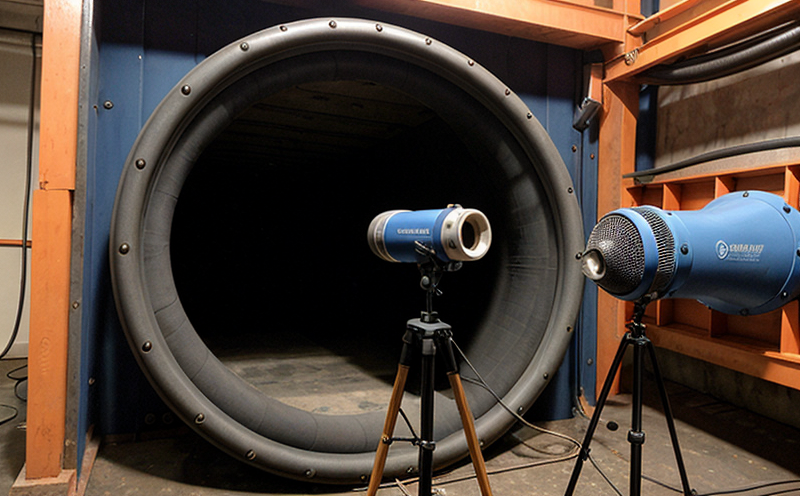ISO 18563-1 Ultrasonic Testing of Composites (Part 1)
ISO 18563-1 is a standard that provides the basic principles and procedures for ultrasonic testing of composite materials. This service focuses on the characterization, inspection, and evaluation of defects in composite structures using ultrasonic methods. Ultrasonic testing (UT) is widely used due to its non-destructive nature and ability to detect internal flaws within complex components.
The standard specifies the requirements for the use of ultrasonic testing equipment, personnel qualifications, test procedures, and data analysis methods. It covers various aspects such as probe selection, coupling, signal processing, and defect evaluation criteria. This service is particularly relevant in sectors like aerospace, automotive, and manufacturing where composite materials are used extensively.
Composites consist of two or more distinct constituents with different mechanical properties that form an integrated material system. Ultrasonic testing allows for the detection of flaws such as delaminations, cracks, voids, and fiber misorientations which can compromise the structural integrity of these components. The test involves sending sound waves into the composite sample using a transducer and measuring the reflection or transmission of those waves.
Ultrasonic testing is advantageous because it provides high-resolution images of internal structures without altering them. This makes it an ideal choice for quality control, defect detection, and life assessment in manufacturing processes involving composites. The standard ensures that tests are conducted consistently across different laboratories and operators, enhancing reliability and reproducibility.
The service typically involves the following steps: preparation of the composite sample according to specified dimensions; application of coupling fluid between the transducer and the surface; alignment of the probe with respect to the orientation of fibers or layers within the composite; scanning across the area of interest while collecting data; analysis using appropriate software tools; interpretation based on established criteria from ISO 18563-1.
For accurate testing, it is crucial to understand the physical properties of composites which vary depending on their composition. Factors such as resin type, fiber reinforcement, orientation angles, thicknesses, and curing conditions all play a role in determining how ultrasonic waves interact with them. Understanding these parameters helps tailor the testing approach accordingly.
The service also includes training sessions for operators to ensure they are familiar with both theoretical knowledge and practical skills required for performing reliable tests. This includes understanding wave propagation characteristics, learning about different types of defects and their signatures in ultrasound signals, practicing on mock samples until proficiency is achieved.
Scope and Methodology
| Aspect | Description |
|---|---|
| Test Objectives | To inspect and evaluate composite materials using ultrasonic testing according to ISO 18563-1. |
| Equipment Requirements | Ultrasonic testing equipment, suitable probes, coupling agents, data acquisition systems. |
| Sample Preparation | Cleaning the surface; ensuring proper coupling between probe and sample; positioning the probe correctly over defect areas. |
| Data Acquisition | Recording signals from the ultrasonic testing process, analyzing them for indications of flaws or damage. |
| Evaluation Criteria | Comparing acquired data against predefined thresholds to determine whether defects exceed acceptable limits. |
Industry Applications
- Aerospace: Inspecting structural components for manufacturing defects before assembly.
- Automotive: Monitoring composite parts during production to ensure quality.
- Military: Evaluating armor plating and other critical structures.
- Manufacturing: Quality assurance in the production of sporting goods, wind turbine blades, etc.
Eurolab Advantages
At Eurolab, we leverage our expertise to offer comprehensive services aligned with international standards like ISO 18563-1. Our team of certified professionals provides detailed reports that meet stringent requirements ensuring peace of mind for stakeholders.
- State-of-the-art equipment and facilities
- Comprehensive training programs
- Highly skilled personnel
- Accurate, reliable results
- Timely delivery of reports





